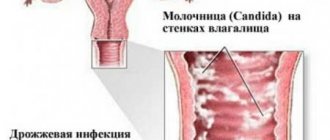What is a mini abortion?
Using a special instrument consisting of a vacuum pump and a handpiece, it creates negative pressure in the uterus. Thanks to this, it is possible to mechanically remove the fertilized egg and decidua from the uterine cavity.
The advantages of a mini abortion include:
- High performance. It is extremely rare that there is a need for repeated manipulation. As a rule, this happens if an incomplete abortion occurs.
- Low morbidity. Such an abortion is completely safe, since when the fertilized egg is removed, the cervical canal is not expanded with the help of dilators, and the uterine cavity does not come into contact with a sharp curette.
- Mini-abortion speed. If you do not take into account preliminary preparation, which includes examining the patient, then the duration of a vacuum abortion will be 20-30 minutes.
- Can be performed without general anesthesia.
- No heavy bleeding, quick recovery.
Disadvantages of mini-abortion:
- The operation is performed almost “blindly”, because the doctor cannot fully guarantee that a complete termination of pregnancy will occur. In 2 cases out of 100, the fertilized egg remains and continues to develop.
- If a mini-abortion was performed by an incompetent doctor, then there is a risk of complications, the most common of which is infertility.
Stages of vacuum abortion
Vacuum abortion is a minimally invasive operation (mini-abortion) that does not require long-term rehabilitation. Lasts only 1.5 to 2 minutes. Extremely rarely - up to 10 minutes. The fertilized egg is literally “sucked out” using a plastic cannula that is inserted into the uterine cavity. There are mechanical and electrical vacuum aspiration.
The operation is performed under ultrasound guidance so that the doctor can see the results. Vacuum abortion is done in several stages:
- The operation is performed on a gynecological chair, the patient is positioned in it, as during a routine examination.
- The woman is given mask anesthesia or light intravenous anesthesia, an injection of anesthesia is injected into the uterus.
- The genitals are treated with an antiseptic.
- The operation takes place without an expander. But for nulliparous women, an instrument is usually inserted first to dilate the uterus. But this manipulation is less traumatic than a surgical abortion.
- A flexible plastic tube with a diameter of 8-10 mm, which is connected to a pump, is inserted into the uterus.
- A vacuum of 0.5 atmospheres is created. Under the influence of negative pressure, the fetus and fertilized egg are separated from the uterine wall and enter the tube. And through the tube to a special place in the device.
- The doctor looks at the monitor of the ultrasound machine to see if all the fertilized egg has separated and come out.
- If a small amount of fertilized egg suddenly remains in the uterus, these particles are scraped out with a special instrument.
- Next, the patient is sent to the ward accompanied by a nurse. The woman gradually comes to her senses after anesthesia.
The operation is painless and lasts approximately 5-10 minutes. If everything went well, the woman can leave the clinic within the next hour.
Indications
The most important indication remains the woman’s desire to terminate the pregnancy. But sometimes the doctor himself prescribes a mini-abortion when the following indications occur:
- frozen pregnancy;
- anembryony;
- pregnancy poses a danger to the life and health of the woman herself;
- previous influenza, rubella and other infections that occurred during pregnancy;
- social indications, which include pregnancy that occurred as a result of sexual contact against the woman’s will, being in prison.
Vacuum abortion can be performed not only to stop the development of pregnancy in the early stages, but also to eliminate certain gynecological problems:
- to perform endometrial biopsy;
- to remove the fertilized egg after surgical or pharmacological abortion;
- retention of parts of the placenta after delivery or cesarean section;
- menstruation disorders;
- concentration of blood or serous fluid in the uterine cavity;
- poor-quality spontaneous abortion.
Deadlines
Medical abortion (up to 22 weeks) is performed using medications (mifepristone, pencrofton) that provoke a miscarriage.
- Up to 9 weeks (63 days of delay in menstruation), it is possible to carry out medical interruption on an outpatient basis;
- From 9 weeks - only in the hospital.
At the request of the woman, abortion is carried out only up to 12 weeks.
In the late period from 12 to 22 weeks, termination of pregnancy is carried out strictly if there are medical or social indications.
Medical abortion is performed on an outpatient basis for up to 9 weeks of pregnancy and provided that the pregnancy proceeds without complications.
During pregnancy from 9 to 12 weeks and above, medical termination of pregnancy is carried out only in a hospital. The effectiveness of drugs during this period is slightly reduced (the shorter the period, the more effective the drugs).
The procedure is performed using a drug called mifepristone (mifegin), which reduces the effect of progesterone, which is the main hormone of pregnancy, and is used in conjunction with prostaglandins - these are drugs that can increase uterine contractions and help reject the fertilized egg.
Contraindications
Since a mini-abortion is an invasive intervention and a minor surgical operation, it has certain contraindications, which include:
- pregnancy that develops outside the uterus;
- fever;
- infectious process (even a “cold” on the lips);
- acute or chronic diseases in the acute phase of organs, concentrated in the pelvis;
- blood clotting disorder;
- less than 6 months have passed since the previous abortion.
Vacuum abortion is not performed if there are contraindications:
- Pregnancy exceeds 5 weeks.
- Malformations of the uterus.
- A neoplasm on the uterus, as a result of which its cavity is deformed.
What tests need to be done before a vacuum abortion?
If a woman has decided to terminate her pregnancy, then before determining the type of abortion, the doctor will definitely order a series of studies. This is necessary in order to identify possible contraindications.
In general, the following tests are performed before a vacuum abortion:
- vaginal smear for flora (hidden infections, inflammation);
- blood test for syphilis (sometimes the disease occurs in a latent form);
- blood test for hepatitis C and B, HIV, herpes, gonorrhea, chlamydia (infections can lead to general blood poisoning after surgery);
- urine analysis (detection of inflammatory processes in the organs of the genitourinary and reproductive systems);
- blood clotting test;
- determination of Rh factor and blood group.
If all tests are normal, surgery is possible. They need to be submitted as quickly as possible so as not to lose the allowable time for a mini-abortion. Our clinic has its own laboratory, so all tests are done quickly.
Sometimes additional studies may be needed if a woman has pathologies of the cardiovascular or pulmonary systems, if she suffers from diabetes or endocrine disorders, or has other chronic diseases.
How is the procedure performed?
The procedure must be performed by a specialist in a hospital setting. The method is used in the first 5 weeks after conception. Anesthesia for a mini-abortion can be local or general. General anesthesia is rarely used. Most often, an anesthetic drug is injected into the cervix. When it has expanded, the doctor suctions the fertilized egg using a cylindrical metal tip.
The cervix is opened to insert the pump tube. It is at this moment that a woman experiences maximum discomfort. Due to the use of such instruments, the duration of the manipulation is 20 minutes. But here a lot depends on the duration of pregnancy. If the period is long, then removing the fertilized egg will take longer.
Most often, such abortions end successfully. The woman has no bleeding, uterine perforation or inflammation. During the manipulation, the uterus may contract, but after an abortion, the spasms go away and no longer bother the woman.
After an abortion, a woman is prescribed antibiotics. Thanks to them, it is possible to exclude the development of an infectious process. A woman can return to her normal life the very next morning after the intervention.
How long does a vacuum abortion last?
Vacuum aspiration lasts approximately 3-10 minutes. It takes a few minutes to administer anesthesia and treat the genitals with an antiseptic. Then insert a flexible cannula - a tube connected to a pump and “pump out” the fertilized egg.
If the cervix is difficult to dilate (usually in nulliparous women), cervical dilatation devices can be used. This takes an additional 1-3 minutes.
After the operation, the woman quickly recovers and returns home.
However, if a control ultrasound test shows that some fetal particles remain, the doctor cleans the uterus with a special instrument. This can increase the abortion time by up to 10 minutes.
When to expect your period
After a mini-abortion, a woman may experience vaginal discharge on the 2nd day. Hormonal changes in the body occur. As a rule, they will go no more than 7-10 days. Discharge may occur in combination with nagging pain in the lower abdomen. This pain is very similar to that experienced during menstruation. If the discharge lasts more than 10 days after the abortion and does not stop, then you should immediately go to the hospital.
Even after surgery, there is a risk of pregnancy. If there are subjective signs of pregnancy - swelling of the mammary glands, symptoms of toxicosis, then you should not put off going to the hospital.
Menstruation after a mini-abortion should be expected in 25-30 days. There may be a disruption in your menstrual schedule. At this time, it is important to think about reliable contraception to prevent re-conception.
Until what time is vacuum abortion performed?
The most suitable time to terminate a pregnancy by vacuum aspiration is 4-5 weeks, or at least 6 weeks. This is due to the fact that during this period:
- the embryo is not yet formed, at 1-4 weeks only the organs of the unborn child are formed, the spine and muscular system are formed (and by the 6th week the embryo already has a face, you can hear the heartbeat);
- in the first 1-4 weeks, placental tissue has not yet formed around the fertilized egg, which has the function of attaching and holding the fertilized egg in the uterus, so it is much easier to tear it away from the walls of the uterus;
- In the first days of pregnancy, serious hormonal changes in the body of the expectant mother have not yet occurred; this is only the beginning of changes.
At this stage of fetal development, it is easy to stop the pregnancy and remove the embryo using a vacuum from the uterus. There will also be no serious shock to the body due to an abrupt termination of pregnancy, since hormonal changes are not yet significant.
Sex and pregnancy after abortion
Sexual relations in a woman should be postponed until the uterus is completely healed. This requires 2-3 weeks. In the first 1.5 months, it is necessary to use contraception to protect against infection and prevent the development of pregnancy.
If after a vacuum abortion a woman takes a pregnancy test and it is positive, then the fertilized egg was not completely sucked out and the pregnancy persisted. The most dangerous thing is when pregnancy develops outside the uterus. For this reason, after performing aspiration, you must consult a specialist 14 days later.
Termination of pregnancy using the vacuum method is the safest of all existing methods of aspiration. After such manipulation, the woman’s body is subjected to minimal stress.
How to prepare for a vacuum abortion
Preparing for vacuum fetal removal surgery requires certain preparation:
- The doctor examines the patient, asks questions, and inquires about chronic diseases, hereditary pathologies, and allergic reactions.
- The gynecologist will refer you for tests and instrumental studies. It will be necessary to determine pregnancy and the location of the fetus using an ultrasound examination. Perhaps the pregnancy will not be confirmed at all.
- Tests for sexually transmitted diseases and a vaginal smear are required to make sure that there are no inflammatory processes or hidden infections in the body.
- After this, the patient signs a document and expresses her consent to a vacuum abortion.
It is better to arrive on an empty stomach on the day of surgery. It is worth taking care of who you meet near the clinic. The body's reaction to anesthesia can be different. An accompanying person may be required. On this day you need to rest physically and emotionally.
Make an appointment and free consultation by calling +7(495) 256-49-52 or filling out the online form
| Select a clinic | Gynecologist appointment | Medical abortion | Surgical abortion |
Answers to frequently asked questions on the topic of termination of pregnancy:
- Which doctor should I contact?
- What examination is necessary before an abortion?
- What consequences can there be from abortion?
- When can you start having sex after an abortion?
- How to recover after an abortion?
- What is an incomplete abortion?
- What anesthesia is used for abortion?
- When can you get pregnant after an abortion?
- What are the contraindications to medical abortion?
- Until what time is a medical abortion performed?
- How is a medical abortion performed?
- How to prepare for a medical abortion?
- Until what time is surgical abortion performed?
- Do you offer late-term abortions at your clinic?
- How to prepare for a surgical abortion?
- What is a vacuum abortion?
- Which method is considered safer?
Home interruption
Mini-abortion at home is possible with the help of herbs. But using such methods is very dangerous, as there is a risk of complications.
You can perform an abortion at home using the following recipes:
- Sherukha. It is necessary to pour boiling water over it, and then finely disturb it to make a paste. Get juice from it. Then dilute it with water in a ratio of 1:2. Place the infusion on the stove to simmer for 2 minutes. The daily dosage is 30 ml, divided into 3 doses.
- You can perform an abortion at home using plants that contain toxins. Tansy is considered such a plant. To obtain a decoction of tansy, you need to take 100 g of herb, add 4 cups of boiling water. Place on the stove and boil for 5 minutes. Wait 2-3 hours, filter and take 10 ml every 5 hours. This method of abortion is based on the fact that toxins negatively affect the fetus, as a result of which it dies. The female body tries to get rid of the dead fetus. But there is a risk that it will not be possible to terminate the pregnancy, and the baby will be born with pathologies.
- An ancient method of terminating a pregnancy involves filling a bathtub with hot water. Sit there and stay there until the water cools down or you can add a new portion of hot water. Under the influence of hot water, the tone of the uterus increases, and the fertilized egg breaks off.
Ultrasound before vacuum abortion
Even if pregnancy is not confirmed using test strips, but there is a suspicion of its presence, the doctor will definitely refer you for an ultrasound examination of the uterus.
Ultrasound diagnostics, performed before a mini-abortion, is necessary for:
- confirmation of pregnancy;
- determining the position of the fertilized egg;
- clarification of the timing of pregnancy;
- detection of non-developing pregnancy – anebrionia or embryo death;
- determination of ectopic pregnancy;
- establishing the fact of an inflammatory process in the uterus.
A non-developing (frozen) pregnancy is removed using vacuum aspiration even at 6-7 weeks. If the fertilized egg is located outside the uterus, vacuum aspiration is not done, as it is fraught with heavy bleeding.
Consequences
There is practically no risk of complications and consequences after performing a vacuum abortion. Naturally, the more similar procedures were performed, the higher the likelihood of complications developing.
The most common complications include:
- Perforation of the uterus. With a vacuum abortion, puncture of the uterus rarely occurs, because the doctor does not use metal instruments for this. This type of complication occurs during manipulation and is accompanied by sudden acute pain.
- Inflammation of the uterus or appendages. It begins to make itself felt 4-5 days after aspiration. The reason for its development is a violation of the rules of asepsis and failure to perform an examination before an abortion. In addition, the inflammatory process may be the result of a woman’s failure to comply with a number of requirements in the postoperative period.
- Hormonal imbalance. Very often, a disruption in the hormonal system occurs in girls at a young age or in those who have not yet given birth. This is due to hormonal changes after termination of pregnancy. This complication can cause ovarian dysfunction and menstruation disorders. Rarely, hormonal imbalance leads to infertility.
- Partial removal of the fertilized egg. An abortion is a surgical procedure that the doctor performs blindly. The possibility of incomplete removal of the fertilized egg cannot be ruled out. This will lead to heavy bleeding and the development of a placental polyp, which requires curettage of the uterine cavity.
- Progressive pregnancy. When performing a vacuum abortion in very early stages of pregnancy, there is a risk that the embryo will not detach from the uterine wall and will progress further.
- Hematometra. Those women who have not given birth have a rather narrow cervical canal. This causes it to fill with a blood clot and pool blood in the uterine cavity. This pathological process is called hematometry. If positive dynamics are not observed after drug therapy, then the cervical canal is expanded with further curatage.
Mini abortion is a modern method of terminating pregnancy in women who either want to get rid of a child or do so as prescribed by a doctor. Before the operation, the woman must undergo an examination so that the doctor is sure that there are no contraindications. If the operation was successful, and the woman strictly followed all the recommendations during the rehabilitation period, then there will be no complications and she will be able to give birth to a healthy baby in the future.
What hormonal medications did you take to stimulate ovulation?
- Gonal 33%, 3497 votes
3497 votes 33%3497 votes - 33% of all votes
- Clostilbegit 25%, 2616 votes
2616 votes 25%
2616 votes - 25% of all votes
- Menopur 16%, 1701 votes
1701 votes 16%
1701 votes - 16% of all votes
- Puregon 14%, 1521 votes
1521 votes 14%
1521 votes - 14% of all votes
- Decayed 9%, 908 votes
908 votes 9%
908 votes - 9% of all votes
- Menogon 3%, 322 votes
322 votes 3%
322 votes - 3% of all votes
Total votes: 10565
Votes: 7774
January 17, 2018
×
You or from your IP have already voted.
What anesthesia is used for vacuum abortion?
During a vacuum abortion, cutting medical instruments are not used. However, the operation must be performed under anesthesia, as it causes pain. Patients are always worried about anesthesia, as it affects their well-being and has contraindications. The doctor takes into account the woman’s health characteristics and determines the type of anesthesia.
Anesthesia can be:
- General. In this case, artificial inhibition of the functions of the central nervous system occurs. The woman hears, sees and feels nothing. She cannot breathe on her own, so she is connected to a special device. She has no memory of the process. After the abortion, she will simply wake up in the ward. This type of anesthesia is given intravenously or using a mask. The presence of an anesthesiologist and special equipment are required.
- Sedation. This is not deep sleep. Anesthesia is used in measured quantities so that the woman is in an inhibited state. At the same time, she retains independent breathing and is conscious. Can dream or barely hear any sounds or conversations. The patient almost does not feel what is happening and does not remember the process itself. It doesn't take much time to get back to normal. This anesthesia is administered intravenously or with the help of a drug.
- Local anesthesia. An injection with an anesthetic is given into the cervix. Painful sensations disappear completely. This type of anesthesia is performed as a preparation for pain relief in the spine. With this method of anesthesia, the woman is conscious and aware of what is happening. But he doesn't feel pain.
Before using anesthesia, an allergy test is performed. There are different medications, so there is always a choice. Recently, gentle drugs have been used. They perform excellent pain relief and at the same time are easily tolerated by patients.
Where to get a vacuum abortion
The vacuum method is used in all medical institutions. Our clinic is certified for all types of services. There are experienced gynecologists who have performed hundreds of vacuum abortion operations and have a good reputation.
Advantages of choosing our medical institution:
- We work seven days a week and seven days a week;
- With us you can undergo all types of tests in one day and get results, since the clinic has its own modern laboratory;
- attentive attitude and individual approach to each client;
- there are all conditions for carrying out any types of abortions, including emergency types of assistance;
- all medical workers are experienced, work in a close-knit team, issues are resolved quickly.
The gynecologist will also give recommendations on the prevention of complications and select the best contraceptive option for the coming months. We guarantee painlessness, speed and quality of abortion with minimal risks of complications.
Advantages of the method
Vacuum aspiration, according to WHO, is considered a safe technology for abortion. It has many advantages over the dangerous, but sometimes necessary, surgical abortion. Its advantages are:
- the time of the operation itself is 5-10 minutes;
- with vacuum aspiration the cervix is not injured;
- the risk of injury or perforation of the uterine body is reduced to zero;
- Pain during the operation is practically not felt, because local anesthesia is sufficient;
- minor damage to the mucous membrane of the uterine cavity compared to surgical abortion, usually the affected area is limited to the parameters of the fetal egg;
- the method is 99.8% effective - the quality of the operation is controlled by ultrasound diagnostics;
- relatively quick restoration of hormonal levels compared even with medical abortion;
- the likelihood of complications after surgery is much less;
- the body recovers completely within six months, subject to the doctor’s recommendations;
- Possibility of performing the operation on the day of treatment.










